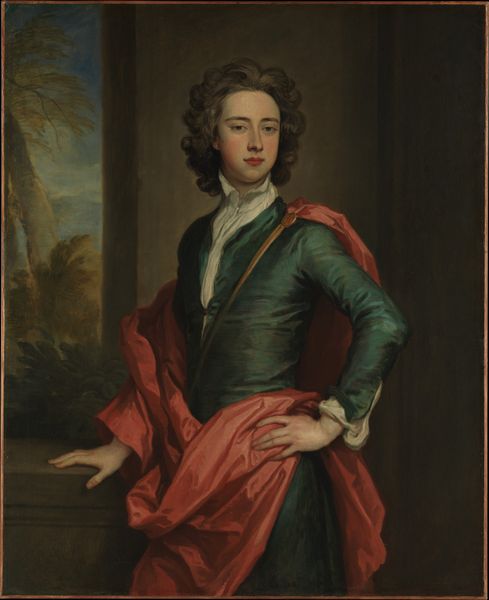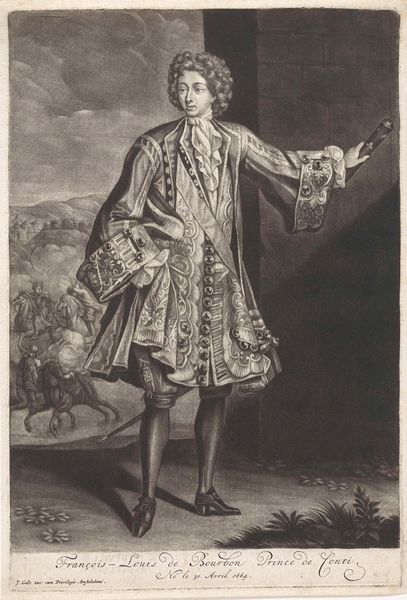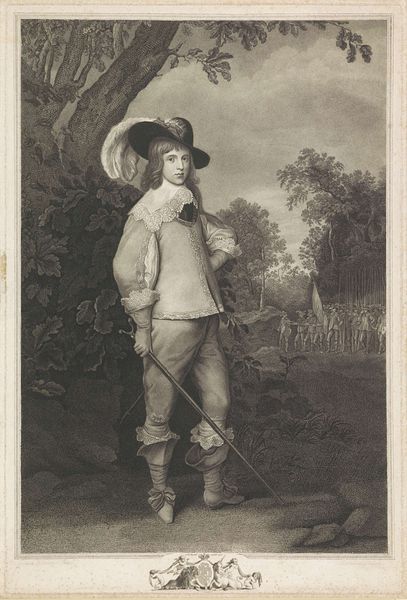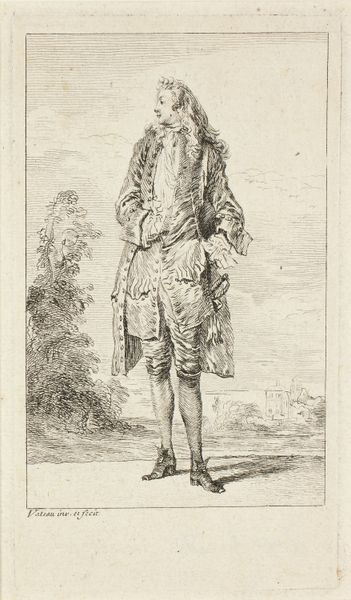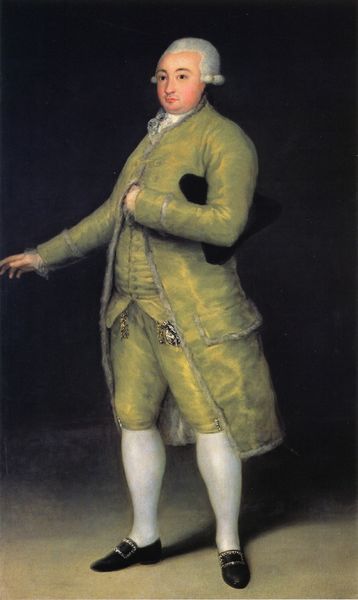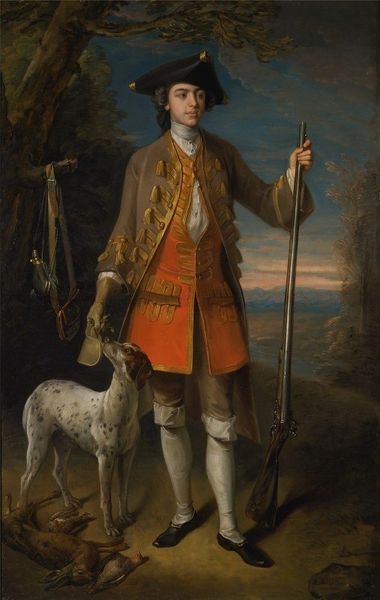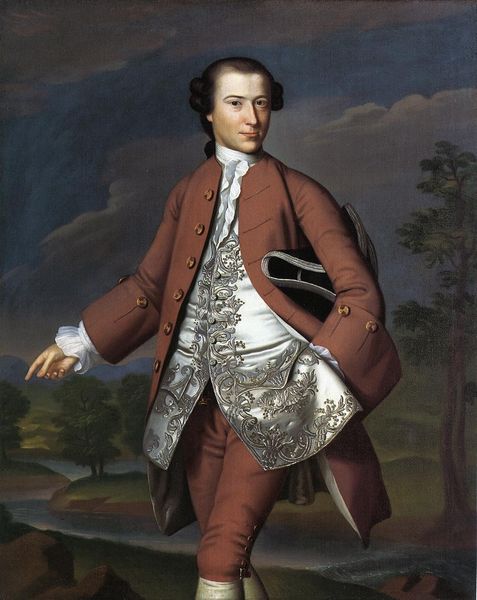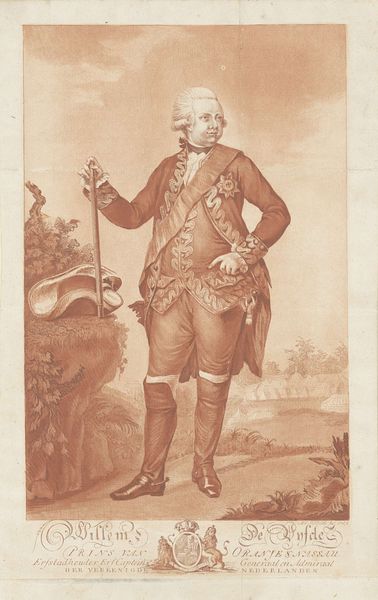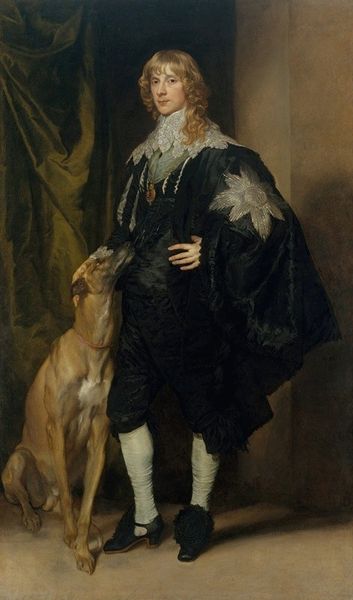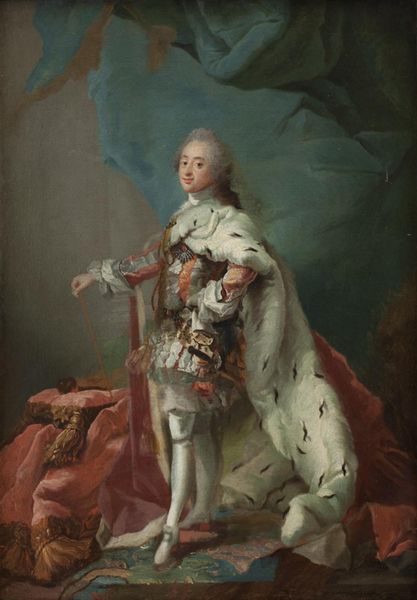
painting, oil-paint
#
portrait
#
painting
#
oil-paint
#
landscape
#
genre-painting
#
rococo
Dimensions: height 206 cm, width 122 cm
Copyright: Rijks Museum: Open Domain
Curator: What strikes me immediately about this oil painting, "Portrait of Gerard Cornelis van Riebeeck" by Mattheus Verheyden from 1755, is this curious balance of intimacy and formality. Editor: It definitely whispers power, doesn't it? The subject, situated amidst this somewhat wild, stylized landscape…it's very much a statement. We can see that he is surrounded by natural and architectual grandeur and it situates him as an elite figure within a landscape that he might oversee, might even be understood to dominate. It suggests the way in which nature is used to further legitimize power, particularly colonial power. Curator: Absolutely. There's this underlying tension, a playful arrogance even. He's dressed in such lavish garments, like an explosion of metallic floral brocade. He's both removed from the everyday and deliberately showcasing his place within it. There's an undeniable… theatricality. It makes you think: who is he performing for? Is he performing for himself? The brushwork itself is lively. And it suggests movement. Editor: Well, Gerard Cornelis van Riebeeck, from what we know, occupied high-ranking positions within the Dutch East India Company, the VOC. That helps explain the ostentation and the somewhat manufactured image. Curator: So, we see that visual opulence mirroring actual power structures. How terribly predictable—and yet, doesn't Verheyden capture it with a delicious sense of… irony? Look at the details: the almost coy way he holds his tricorn hat, the statue lurking in the garden like a silent, classical judge. It's all staged, yet suggests to me this very private self-awareness, a playful sense of judgment on that staging. Editor: Absolutely, I agree with that reading of irony, but also the landscape flattens any opportunity to feel empathy. Curator: So even a portrait then…becomes an arena of… negotiation. Editor: In the 18th century, image was everything. Verheyden wasn't just painting a man, he was cementing a narrative. It begs questions about colonial representation and what those things meant, not only at the time, but now. It still echoes with very serious implication. Curator: True, you've provided important cultural contexts that, from a distance, I think one can easily bypass. And maybe what's revealed for me here is that even the seemingly innocent portrait can reveal very complex layers. Thanks for lending me your insight. Editor: And you your creative eyes that, from your artist perspective, reminds me there's always more to unravel.
Comments
rijksmuseum about 2 years ago
⋮
Van Riebeeck had himself portrayed against the back-ground of his estate. He was an influential regent, who from a young age served as town secretary of Delft. Here, he wears a gold brocaded coat with matching cuffs. The large number of buttons sewn on his clothing is remarkable: most are purely decorative, as are the large buttonholes on the coat.
Join the conversation
Join millions of artists and users on Artera today and experience the ultimate creative platform.

